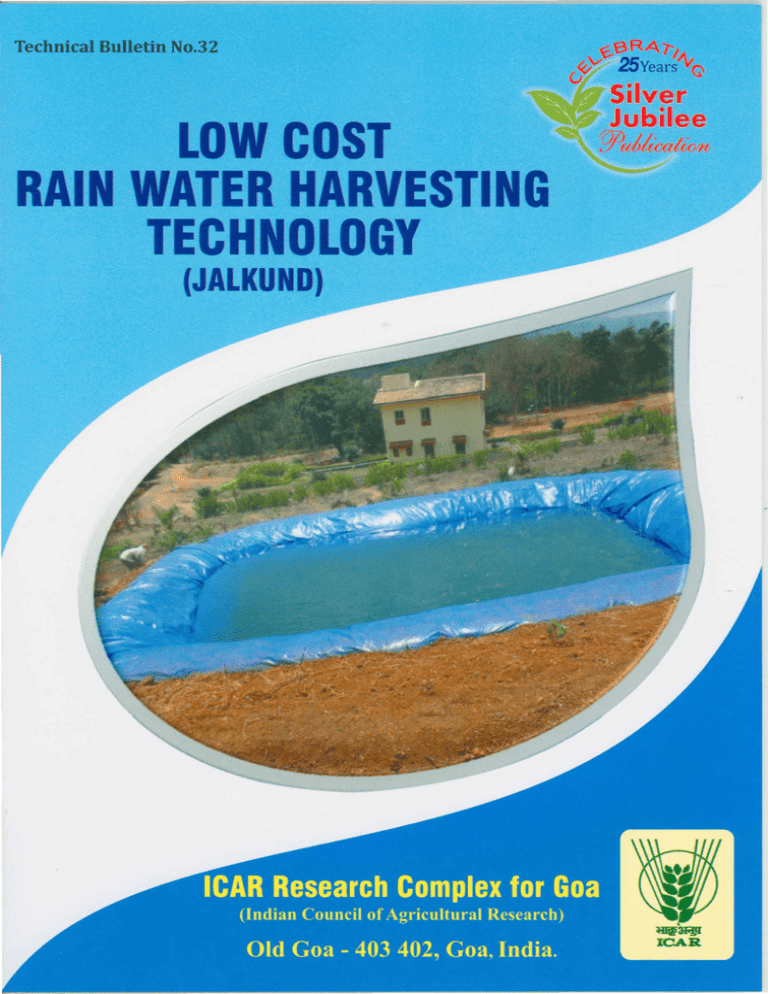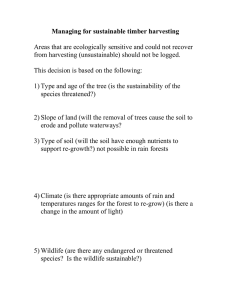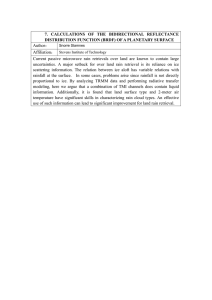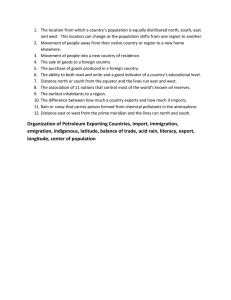
~eRA...,../
0~'v 25Years J\tQ
LOW COST
RAI WATER HARVESTING
TECHNOLOGY
(JALKUND)
Silver
Jubilee
,4Jultlt:Calt~n
~aRA."1)
~v
(;
25YearsJVQ
-I
Siver
Jubilee
pjJ~
LOW COST
RAIN WATER HARVESTING
TECHNOLOGY
(JALKUND)
~3Ii!!I
ICAR
ICAR Research Complex for Goa
(Indian Council of Agricultural Research)
Old Goa - 403 402, Goa, India.
Published by
Dr. N. P. Singh
Director
ICAR Research Complex for Goa
Old Goa - 403 402, Goa. India
Fax
Phone
Email
Website
91-832-2285649
91-832-2284678,2284679
director@icargoa.res.in
http://www.icargoa.res.in
Copyright © 2013, Indian Council of Agricultural Research (ICAR)
All Rights Reserved. For reproduction of this document or any part thereof, permission
ofIndian Council of Agricultural Research (ICAR), New Delhi must be obtained.
Ram Ratan Verma, B. 1. Manjunath & N. P. Singh (2013). Low Cost Rain Water
Harvesting Technology (Jalkund), Technical Bulletin No. 32, ICAR Research
Complex for Goa (Indian Council of Agricultural Research), Old Goa-402402,
Goa, India.
PREFACE
Water, the crictical input in
production is decreasing in its
over the years. Any effort made
and re-utilise the rain water is a
direction.
agriculture
availability
to conserve
boon in this
Direct water catch pits (Julkunds) are simple
and easy to establish and can especially be
of much use in the undulating topography
for establishement of crops. The exprience
gained in this regard shows good potential for
the benefit of farmers.
We sincerely acknowledge the reserach efforts
carried out earlier by Dr. S. Manivannan,
Senior Scienctist (Soil and water conservation
engineering) as well as the visionaries who
have contributed in this endeavour.
>ircrr ~ ~
'qT. '12. 3lJ . q . 'liT ~
(wrfr:! ~
~
qfh:p-
qfh:p:-)
ICAR Research Complex for Goa
Dr. N. P. Singh
Director
(Indian Council of Agricultural Research)
Old Goa - 403 402
Tel.: 0832-2284677/678/679
Fax: 0832-2285649
Email: director@icargoa.res.in
FOREWORD
Water is an important input in agricultural production, the availability of which is shrinking
over the years. The West coast region of India with its undulating terrain and laterite soils
with high infiltration rate, although receives abundant rainfall, utility of the rain water
is only limited. Further, owing to limitations of distribution pattern of rainfall, the crop
production faces a serious challenge of water availability especially during March-May
periods during each year. In addition, the rainfall is also varying over the years temporally
and spatially. As such, harvesting and storing the rain water has become a prime necessity
in all the areas.
One of the approaches to conserve this valuable resource is to store on the surface
through suitable interventions. This stored water especially in the elevated sloppy areas
not only serves as a life saving irrigation but also will favour the better establishment of
orchards with better availability of moisture during establishment phases of perennial!
horticultural species.
I am happy to note that ICAR Research Complex for Goa made efforts to standardise
the technology for "LOW COST RAIN WATER HARVESTING (JALKUND)" through
a series of trials based on the practical feasibility in the region and bringing out this
publication especially on the eve of Silver Jubilee celebrations of the establishment of
the Institute. We are grateful to Indian Council of Agricultural Research, New Delhi for
financing the Project.
I will also appreciate the efforts made by the scientists to popularise this technology for
better livelihood security of small and marginal farmers of the region.
This compilation will serve as a practical guide for establishing rain water harvesting
structures in the region as well as to provide relevant information to the researchers,
extension workers and to the farming community.
~
Narendra Pratap Singh
ater is one of the most important
factors
in
agriculture
for
successful crop production. The
West coast region of India including Goa
with undulating terrain receives abundant
rainfall upto 3000-3200 mm in a year but the
distribution of it is limited only to South West
monsoon period ie from June to September.
As such, practically there is no moisture
in soils of the region for more than eight
months of the year. Thus, there is a greater
need for storing of this abundant rainfall
W
received in the region for profitable crop
production. Unavailability of adequate
amount of water during the dry season
becomes a serious problem to the farmers
for successful farming. This problem can
be minimized by rain water harvesting
and its judicious use in agriculture. Direct
rainfall collection through water catch
pits Ualkunds) can be highly beneficial to
the farmers for providing irrigation to the
crops under moisture scarcity conditions
during the dry season.
Steps involved in construction of a jalkund:
•
Dugout a pit of desired dimensions
needs be irrigated.
•
Remove stones and other material with sharp edges from the bottom and
sides of the pond.
Low Cost Rain Water Harvesting Technology (Jalkund)
as required
according to the area which
2
•
Provide proper smoothening to the inner walls, including the bottom of
]alkund by plastering a mixture of clay soil and cow dung in the ratio of 5:1.
•
Spray insecticide (Chlorpyriphos 35 EC@ 2mlflitre
ofthe inner walls and the bottom of]alkund.
of water) on the surface
Low Cost Rain Water Harvesting Technology (Jalkund)
•
Place 10-15cm thick layer of paddy straw along the sides and bottom of the
]alkund to ensure a smooth surface.
•
Dugout a trench of size 30 cm width and 30 cm depth along the sides leaving
a space of30 cm from the edge ofthe]alkund.
4
•
Line the sides and bottom of ]alkund with 250 GSM thickness Silpaulin
polyfilm.
•
Fix Silpaulin polyfilm in the trench dugout around the ]alkund and cover with
soil to ensure that the sheet does not get displaced.
Low Cost Rain Water Harvesting Technology (Jalkund)
•
Make
a
drainage
preferably
30cm
of 30cm
depth
on upper
width
across
the
and
the evaporation losses and to keep
the animals away through
slope
side of the jalkund
of oil. As an alternative
to
reduction
of evaporation,
enter in
available
coconut
and similarly
the jalkund
make an
of
•
leaves can be
Fencing of 1 to 1.5 m height may
excess water.
also be provided
Pour about 100 ml of Neem oil
jalkund
into the jalkund
from stray animals.
every year after
locally
used to cover the jalkund.
on lower side of
for safer drainage
smell
option for
ensure that muddy water will not
outlet channel
•
the end of rainy season to avoid
channel
all around
to prevent
the
its damage
Benefits ofjalKund :
•
Rain water can be stored directly in the jalkunds during the rainy season which can
be utilized to provide protective irrigation to the crops for successful cultivation.
Otherwise, it may cause soil erosion and nutrient loss through runoff.
•
Stored water can also be utilized for the rearing of Livestock, Piggery, Poultry and
Duckery.
•
Fish rearing can also be taken in the harvested water.
•
Major crops which can be grown through utilizing Jalkund harvested water include:
Vegetable
crops:
Brinjal, Chilly, Tomato, Radish, Amaranthus,
Cowpea, etc.
Horticultural
crops: Cashew, Coconut, Mango, etc.
Flower crops: Jasmine, etc.
Under Protected
cultivation:
Vegetables: Cucumber, Chilly,etc.
Flower: Gladiolus, Lilium, etc.
Coriander,
Dimension ofJalkund (L X W X D)
8.0mx6.0mx
Dimension of 250 GSM Silpaulin
polyfilm sheet (L X W)
13mxllm
Provision for outlet
Make a outlet in sloping side of the
Jalkund
Provision for excess water drainage
Make an excess water drainage channel
across the slope on upper side of the
Jalkund
Water harvesting capacity
72,000 litres
Approximate area which can be
irrigated through drip irrigation
0.15-0.20ha
Approximate cost
Rs.25,000-30,000
Approximate life of the Silpaulin
Polyfilm
10 Years
Major cost involved in jalkund:
The cost of making a]alkund depends
on its size and input rates in the market.
The main costs involved in construction
of a ]alkund are digging expenses and
cost of silpaulin polifilm sheet. Digging
cost depends on site topography, soil
type and prevailing labour rates in the
region.
The use of insecticide cost is very
nominal and fencing can be made by
using locally available bamboos or cheap
1.5m
wood of the farm which does not require
any extra cost.
Conclusion:
Although larger size ]alkunds can
be also constructed as per the area
need to be irrigated but smaller size
]alkunds require low cost and are easy
in maintenance. As such, smaller size
]alkunds are recommended
which are
more affordable and useful to the small
and marginal category of farmers.
l.R <t>GOJI, l.R 6<JR
fib:~nofl <PI
IT. \"/t.~v:
~t~\
•
~3FlII
ICAR
6d1RLJ>"2:
/{
~~
Aqr.fseorch with oj;umon louch
I




